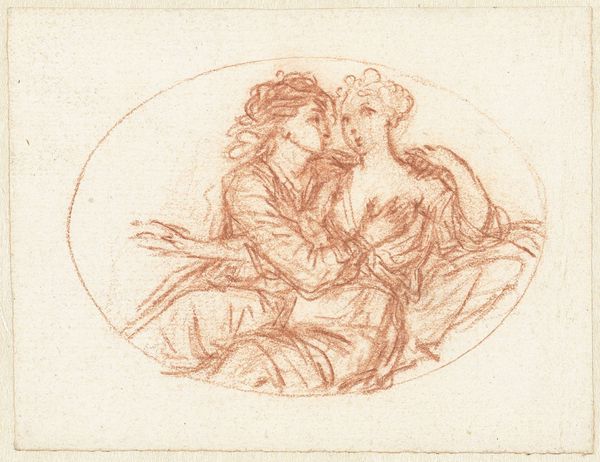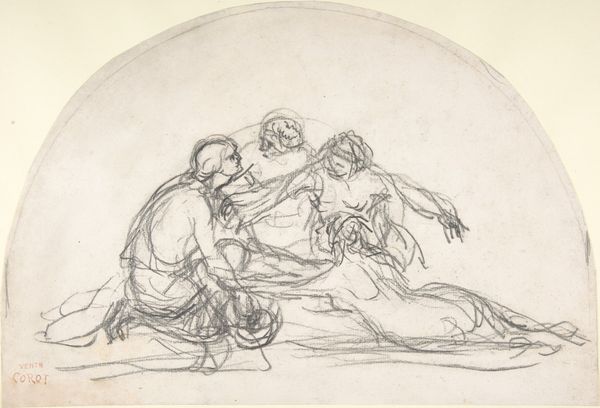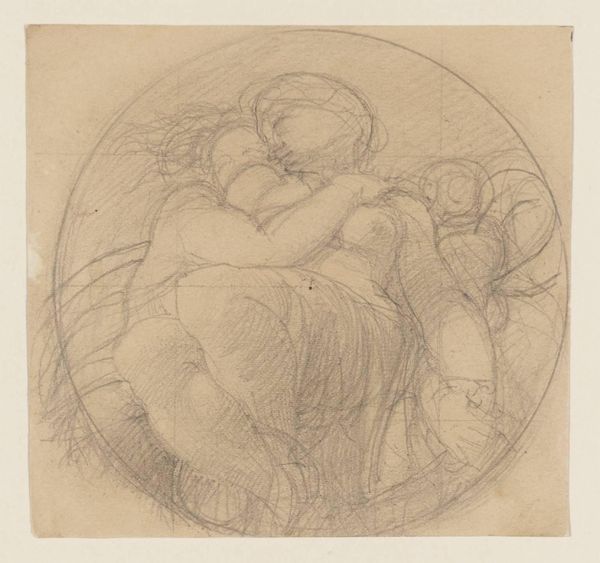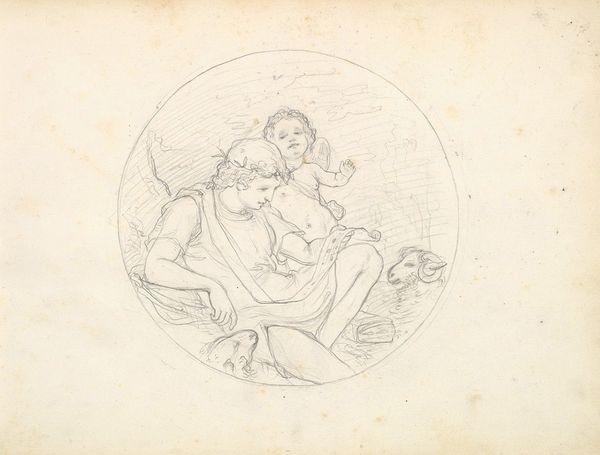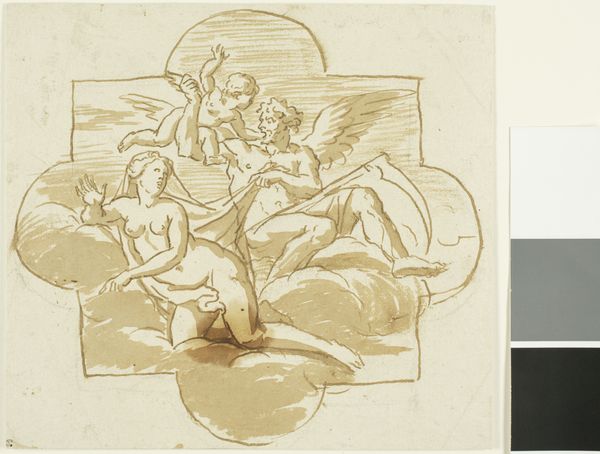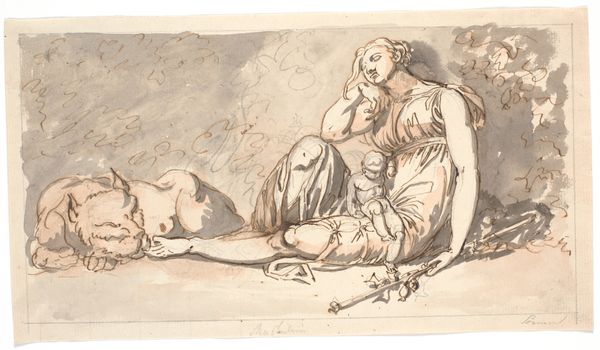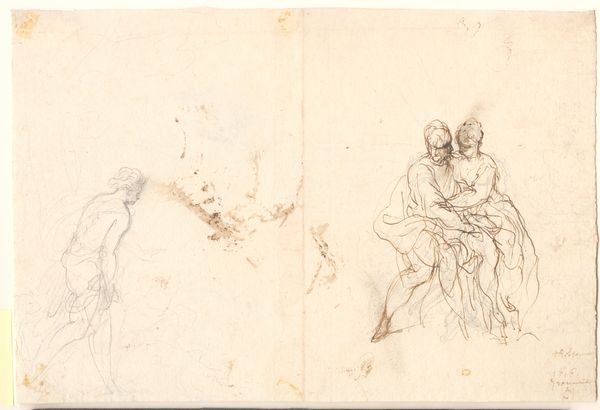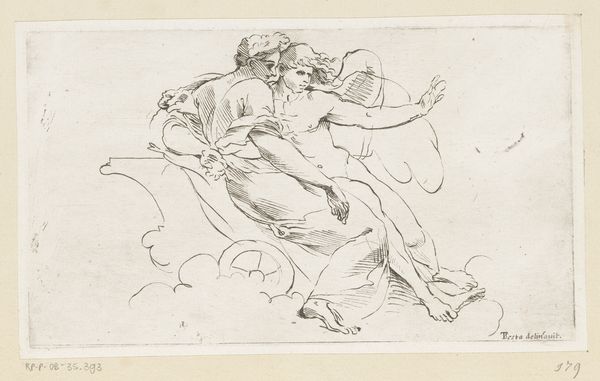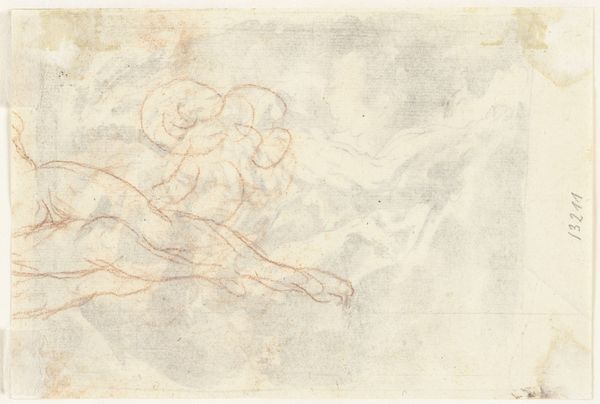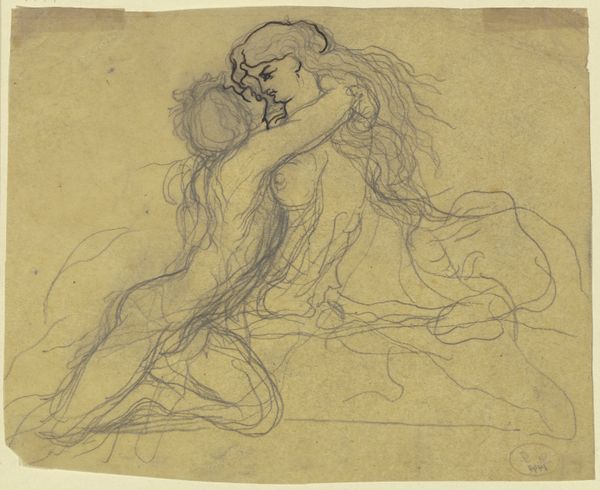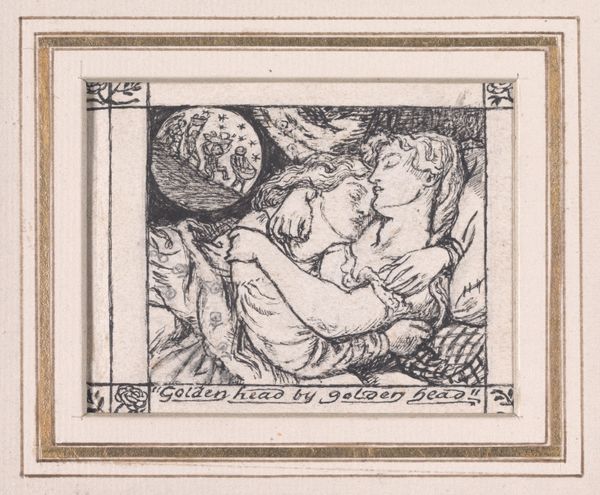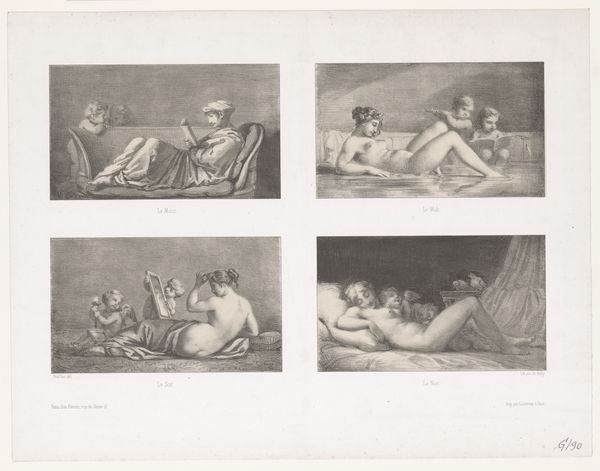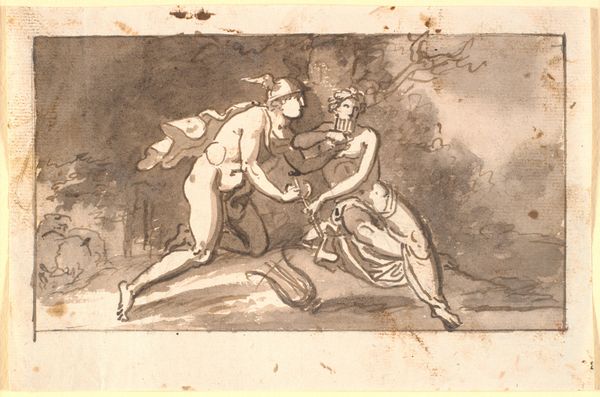
To cirkelrunde kompositioner af en moder, der sidder med sit barn i favnen 1743 - 1809
0:00
0:00
drawing
#
portrait
#
drawing
#
genre-painting
#
northern-renaissance
Dimensions: 175 mm (height) x 272 mm (width) (bladmaal)
Curator: Look at these twin circular drawings by Nicolai Abildgaard, created between 1743 and 1809, entitled "Two Circular Compositions of a Mother Sitting with Her Child in Her Arms.” What's your immediate reaction? Editor: Stark. The line work, though delicate, has a cold, almost neoclassical austerity. There's a raw, almost anatomical feel, especially to the children’s limbs. Curator: That austerity is key. Abildgaard was a pivotal figure in ushering in Neoclassicism to Denmark. These intimate mother-and-child portraits also exist in a very specific historical moment: a growing sentimentalism regarding motherhood, but expressed through the very formal language of the era. The idealized form of the mother harkens back to ancient depictions of goddesses. Editor: Yes, I can see it. Though domestic in subject, there’s nothing truly cozy about these circles. It almost feels like an exercise in form. Observe the drapery—those precise folds suggesting classical sculpture more than a domestic interior. Also, the very deliberate contrast and carefully placed contours make for some highly organized spaces, particularly with the second figure and how the forms of her hands echo those of her child’s. Curator: Consider that during this time, aristocratic women were beginning to take a more active role in their children's upbringing. These drawings seem to suggest both that growing value placed on domesticity while reinforcing, through visual vocabulary, the mother’s social status. These are drawings created within, and intended to circulate within, a very small elite society. They reinforce very particular cultural values. Editor: Absolutely, it also occurs to me that it seems that both figures have some indication of head covering on, suggesting modesty. The rendering is also striking in its flatness: Abildgaard focuses more on line than volume, emphasizing an almost didactic clarity. This simplicity adds to the stern tone that the compositions communicate, no excess in line and embellishment at all. Curator: Indeed, this simplicity underscores the "moral" virtue of motherhood in a period increasingly preoccupied with social reforms and clear codes of conduct. These drawings participate in that visual dialogue. They present the idealized mother figure as both an object of sentimental connection and an emblem of proper societal conduct. Editor: So much embedded into a simple form and restricted palette! Looking closer I can really see those tensions playing out.
Comments
No comments
Be the first to comment and join the conversation on the ultimate creative platform.
